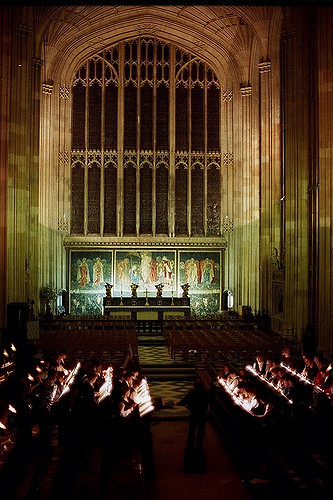Aperture and ISO setting for indoor film photography?
I have a Nikon FG-20, and I haven't exactly gotten the whole jist of aperture and ISO. I've been noticing that many of my indoor pictures have been turning out largely underexposed, which I'm assuming is due to poor setting of aperture. What would be an ideal setting for indoor photography?
For normally lit rooms I'd suggest an ISO of 800, decrease the aperture value as much as possible (around 2 or 3 or so), and then play around with the shutter speed until you get the best result. Try and keep the shutter speed above 1/100 to ensure you don't get a too blurry picture.
If something's underexposed it's due to a poor mix of shutter speed and aperture. You need to get yourself a light meter, they don't need to be expensive as you can pick up good manual one's from ebay.
What ISO you use depends on the light. If it's low, aim for 400 or higher (obv you have to use the correct ISO for the film). If it's bright light, go for 100.
You could watch this video too. Explains how to meter without a light meter. As it is, we can't really say exact settings to use because it depends entirely on the light available.
There's no 'ideal' setting for indoor photography, the lighting can be all over the place in terms of light levels and your ISO speed is what the film provides. Since the ISO is fixed by the film, you have two settings, aperture and shutter speed, that you can use to control exposure. If the images are under exposed, you need to let in more light by opening up the aperture (smaller number), or increasing the time the film is exposed (longer shutter speeds).
It's almost always the case that, given a properly working camera, which also means the in-camera metering is accurate, the problem is in not really understanding the camera's metering, or not metering correctly.
Nikon FG-20
That's an oldy, but a goody!
First and foremost, check your meter battery. A bad meter will ALWAYS throw exposure off.
Don't worry so much about ISO. It's the least of your worries. ISO stays constant with every roll of film, afterall. You set it and forget it. What to remember with ISO: The larger the number, the more sensitive the film is to light, hence you'll be able to use faster shutterspeeds and smaller apertures. The drawback (or benefit in some cases), is the higher the ISO, the grainier the photo.
What matters more is setting the aperture and shutterspeed correctly to expose for whatever light you're shooting in. Handheld you generally don't want a shutterspeed slower than 1/60th or you run the risk of blurring your shots. If you have a 50mm lens, I can guarantee it's fast enough for most indoor daytime shots handheld no matter what film you're using.
Set the Shutter to 1/60 or 1/125. Put your lens to the widest aperture it can, and see what your internal meter is telling you. If you're still not getting enough light in, then and only then, get film with higher ISO.
Keep in mind, these are guidlines for general shooting. Extreme low light or freezing fast action calls for much higher ISO and shutterspeed.
What does the exposure meter tell you? What mode is it in?
This is manual mode (Nikon FM2). There's no auto mode for this camera.

Its all depends on light of your location and you can read user manual of your Camera.
or search here http://www.learnphotoshopcs2.blogspot.in
- Does the iso of the film dictate the iso in the camera?
- Street Lamp Photography exposure? Higher ISO & Lower Shutter Speed or Lower ISO & Higher Shutter Speed?
- Street Lamp Photography exposure? Higher ISO & Lower Shutter Speed or Lower ISO & Higher Shutter Speed? - 1
- What ISO, Aperture, and Shutter Speed to use with Flash?
- How to find out the iso and aperture from a photo i've already taken on my nikon d3000?
